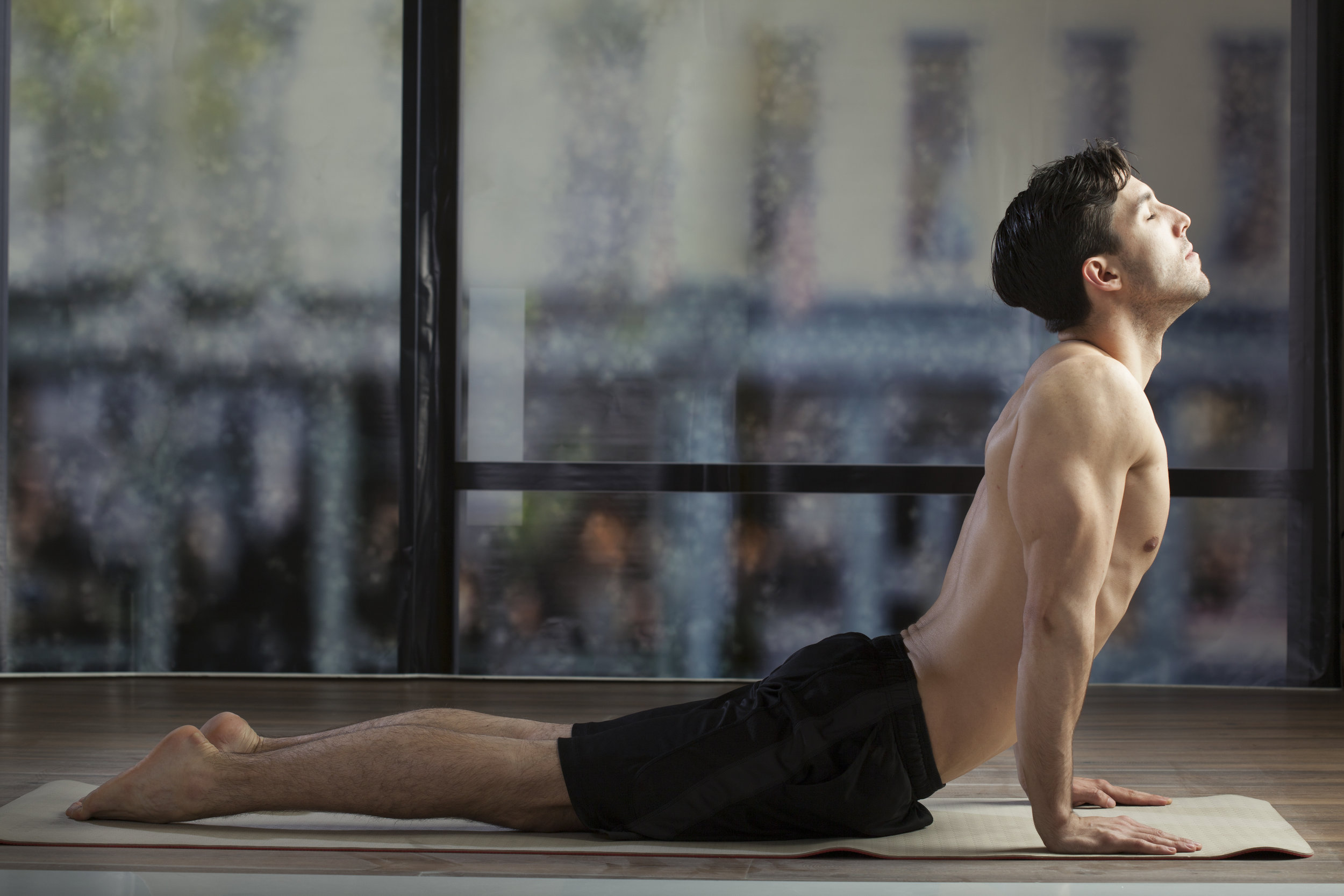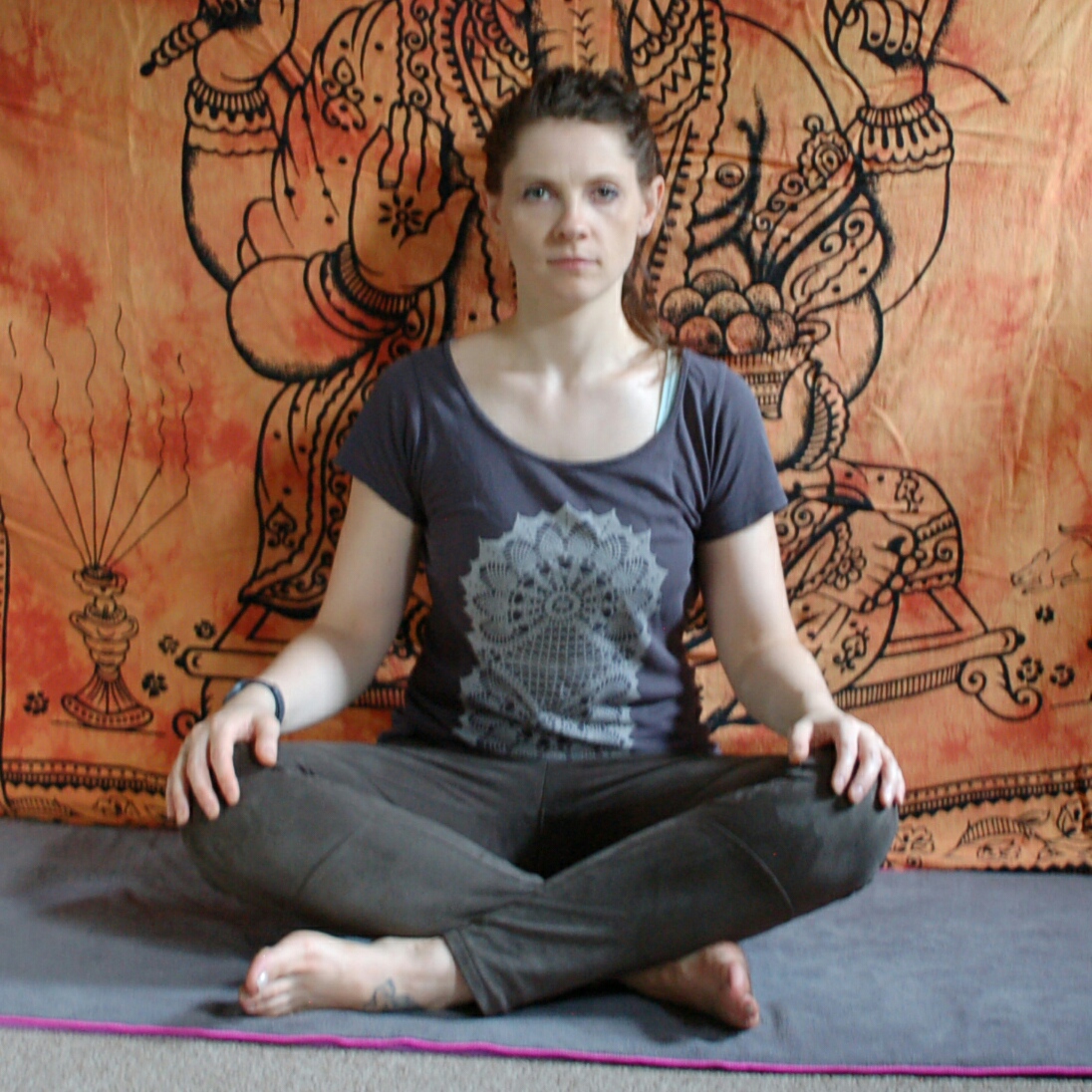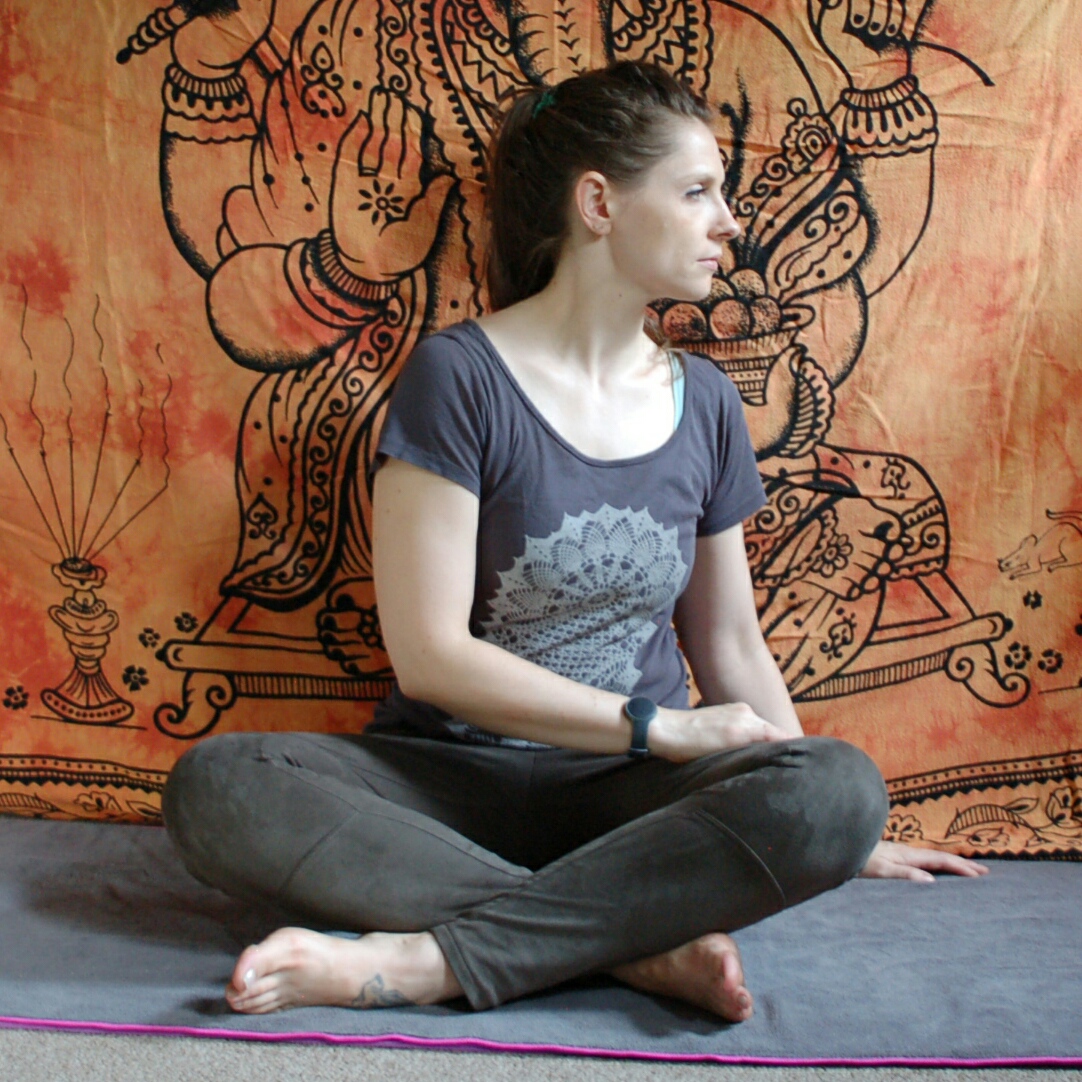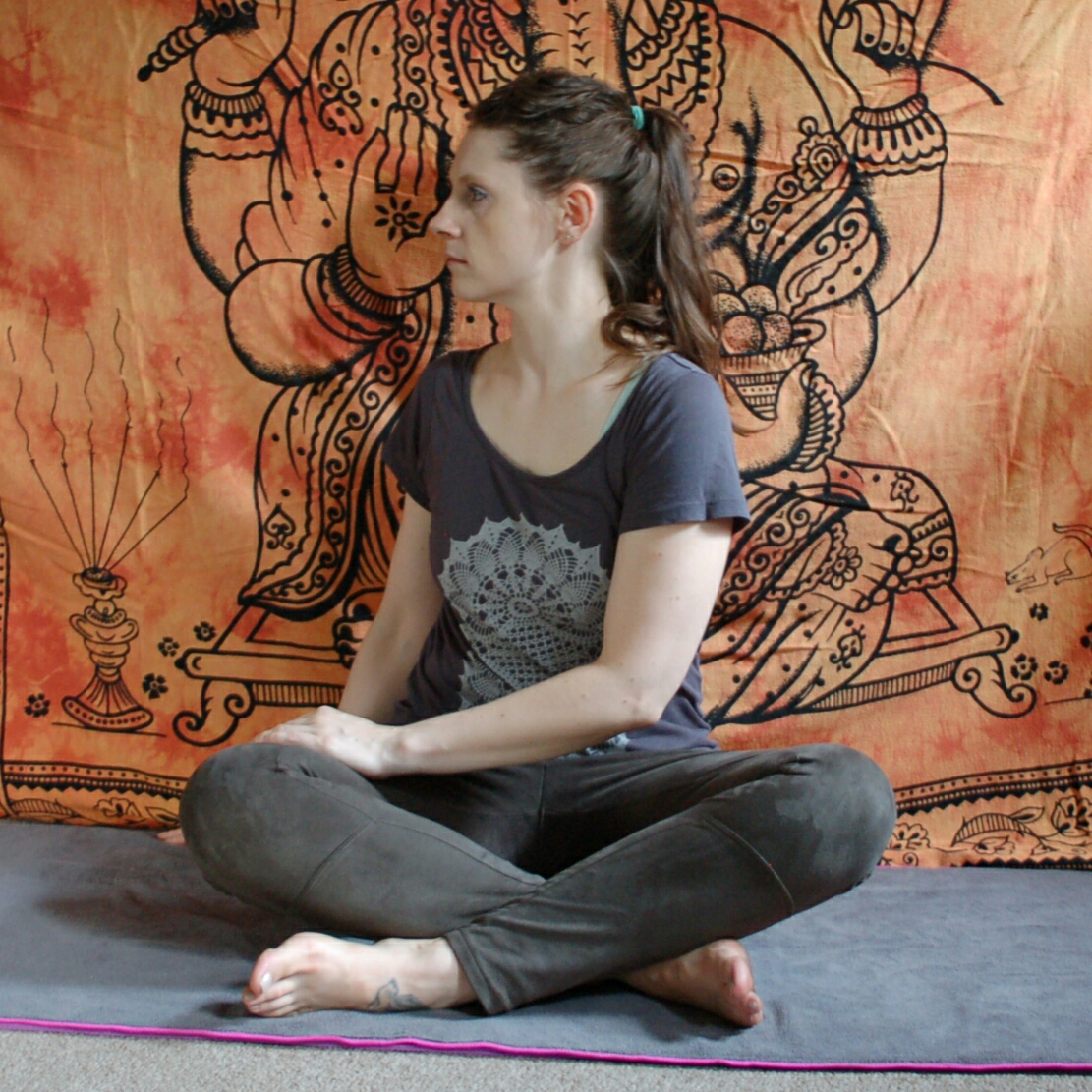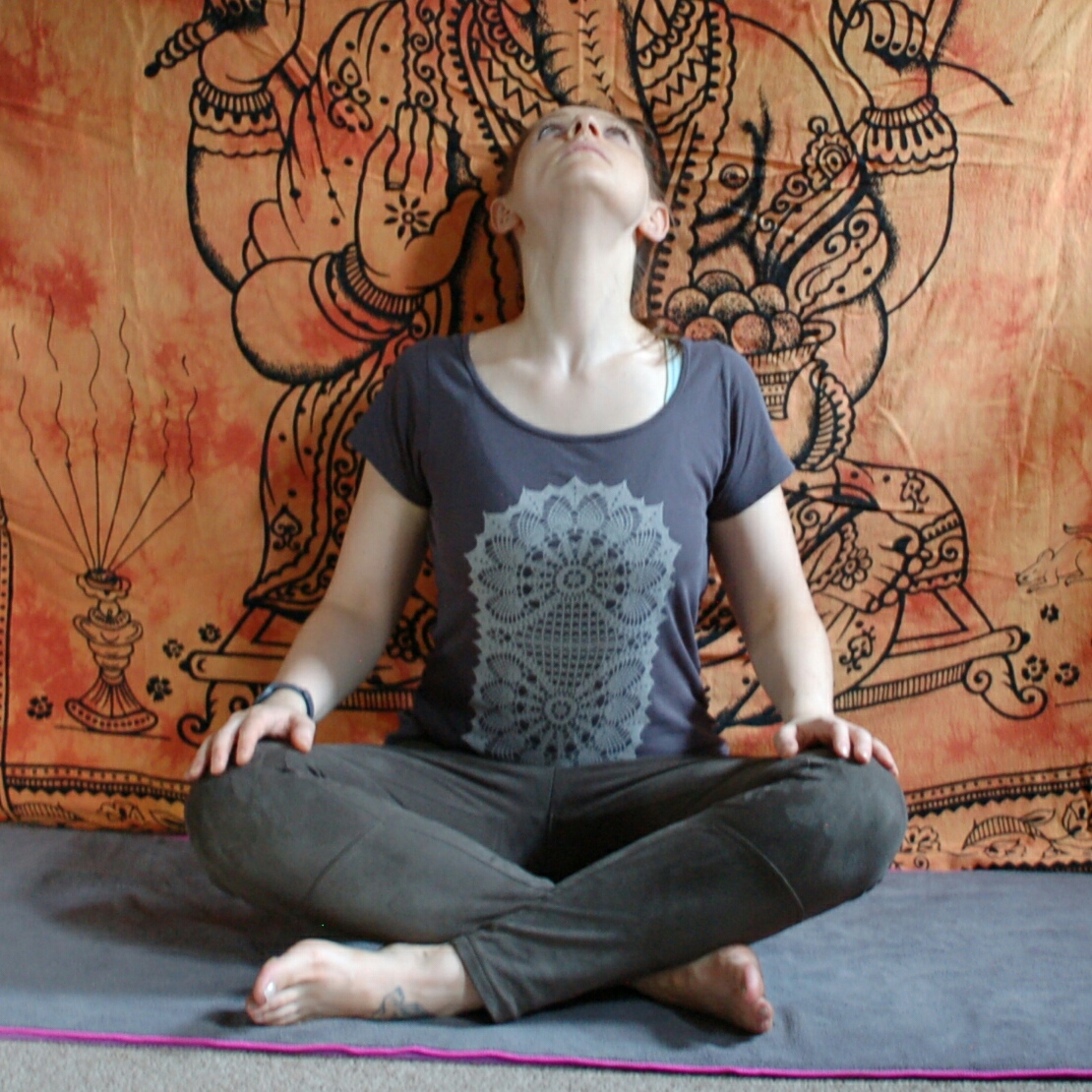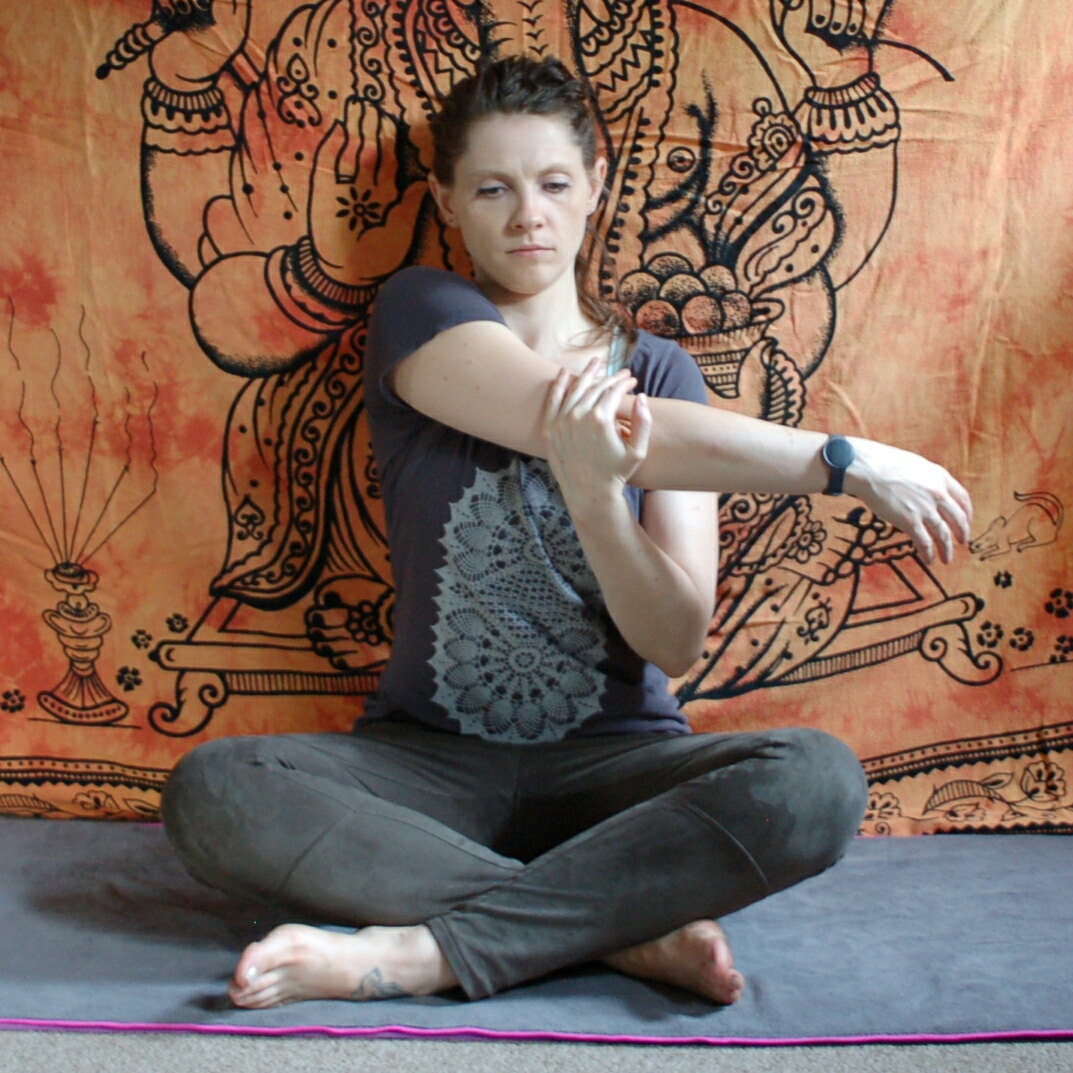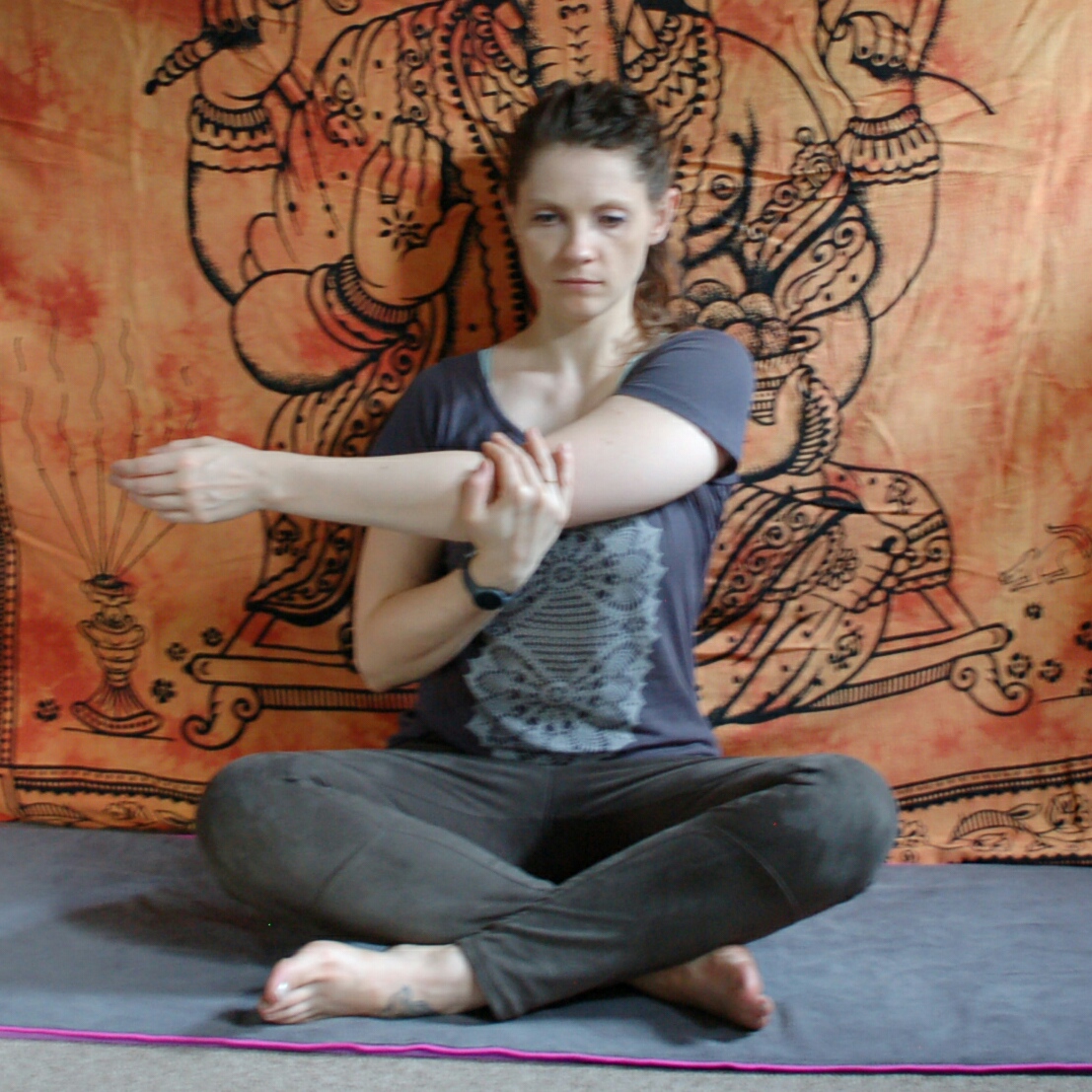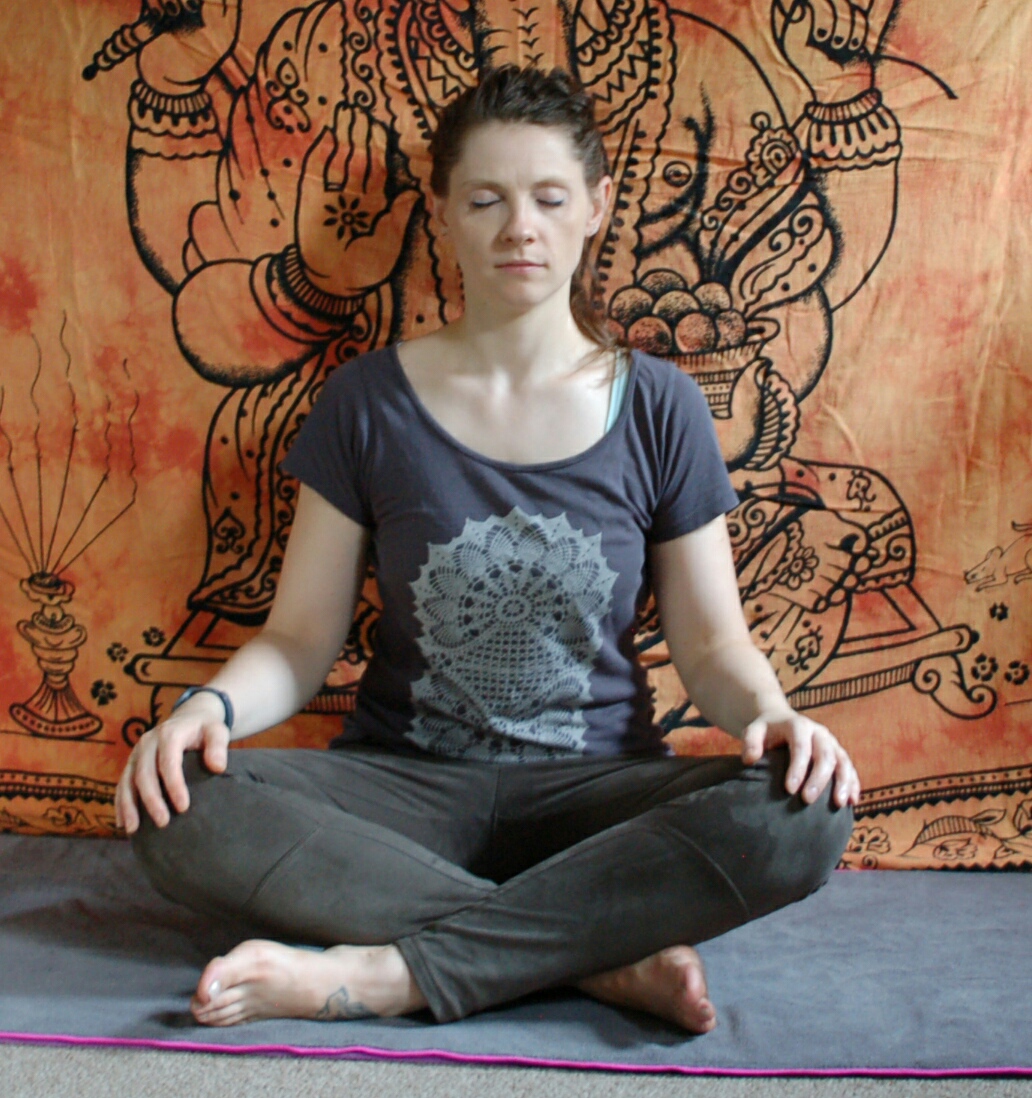“Human beings are tender creatures. We are born with our hearts open. And sometimes our open hearts encounter experiences that shatter us. Sometimes we encounter experiences that so violate our sense of safety, order, predictability, and right, that we feel utterly overwhelmed — unable to integrate, and simply unable to go on as before. Unable to bear reality. We have come to call these shattering experiences trauma. None of us is immune to them.”
What is Healing With Yoga?
Healing With Yoga focuses on a connection with the self. It is trauma-sensitive yoga (TSY) that uses a gentle series of postures while exploring mindfulness and relaxation through deep breathing techniques. Healing With Yoga is ideal for those who are coping with trauma, grief, who are survivors of domestic violence or abuse, war veterans, or those who are dealing with post-traumatic stress disorder (PTSD), are currently participating in talk therapy or other counseling, and are looking additionally for a body-based therapy to peacefully access the inner experience and help calm physical tensions in the body.
Participants of Healing With Yoga take a journey of self-discovery. They practice maintaining a present-moment focus, while observing and comfortably making choices about their inner body experience. They also learn how to foster a sense of calm by addressing emotions or thoughts while remaining safely anchored in the present. In establishing a new, nurturing relationship with one's body, one may also positively affect overall health, restoring basic biorhythms such as eating, sleeping, and energy levels, as well as the body's innate regulation system. In addition, there may also be positive changes in one's relationships and experience with the world.
How does Healing With Yoga help in healing from trauma?
It is important to recognize that trauma that needs "special processing" constitutes more than just a situation or a series of events. If we acknowledge that circumstances around a stressful event (such as an accident, natural disaster, surgery, death, war-related violence, domestic abuse, crime, rape, or homicide) commonly includes issues such as an exploitation of power, betrayal of trust, lack of choice, entrapment, helplessness, fear, pain, confusion, or loss -- interpersonal, social, psychological, and emotional elements -- then we can understand that these events, when perceived to be a threat to one's life, bodily integrity, or sanity, can give rise to psychological trauma.*
Since it is in *how* a person processes a traumatic event, not the facts of the event itself, which defines trauma for a particular person, this explains why some people walk away from a scary incident unscathed, while others experience a traumatic brain injury, accompanied by physical and emotional distress. Those of us who are traumatized are "stuck", and even though we may be safe and out of harm's way, because we are unable to integrate the trauma into our lives, our minds and our bodies (which have somatically stored the trauma) are stuck in survival mode. We may remain hypervigilant, afflicted with unpredictable and uncontrollable flashbacks as well as immobilizing gut-wrenching emotions.
Physiologically, this "stuck" mode is costly. Along with chronically elevated stress hormones, our sense of the environment, of time, space, and our sense of self can be dulled. We may dissociate from parts of our body. We may have impaired memory, crippling anxiety, emotional numbness, or joint or muscle pain that has no physical basis for explanation. Recent brain-scan studies led by Dr. Bessel Van Der Kolk, a psychiatrist at the forefront of neurobiological studies on trauma, have shown deactivation of the thalamus, dorsolateral prefrontal cortex (DLPFC), and medial prefrontal cortex (MPFC) -- crucial areas of the brain -- in traumatized people, whether they are having a flashback or not. Deactivation of such areas of the brain can become injurious if the body is actually in harm's way at some point in time but cannot correctly sense it. These scans validate, as stated by Dr. Van Der Kolk, that "behaviors [of traumatized individuals] are not the result of moral failings or signs of lack of willpower or bad character -- they are caused by actual changes in the brain."**
Those of us who participate in talk therapy with a psychotherapist, whether it be a form of exposure therapy or cognitive behavioral therapy (CBT), practice an analytical, intellectual approach, much like socializing with family and friends who, by listening to us and consoling us, also help us process our trauma. Efforts to integrate the trauma into a life story that is a cohesive, matter-of-fact narrative via talk therapy, may however, in some cases be challenging if revisiting a past traumatic experience causes the triggering of a fight-flight-or-freeze stress response, which can feel debilitating.
This is where a body-based approach such as Healing With Yoga may be a helpful adjunctive mode of therapy. This approach includes positive, calming, deeply felt *physical* experiences -- ones that contradict pervading feelings of helplessness, rage, and immobilization. Positive body-based experiences via breath-work and movement provide another entryway to healing by helping to recalibrate the autonomic nervous system (ANS), which is responsible for regulating between parasympathetic (relaxed, slow heart beat) and sympathetic systems (aroused, body in acceleration).
The efficacy of trauma-sensitive yoga has recently been studied. In particular, in a 2008-2011 PTSD-specific neurophysiology study, trauma-sensitive yoga reduced PTSD symptomology by 52% -- (from the research report:) "Yoga may improve the functioning of traumatized individuals by helping them to tolerate physical and sensory experiences associated with fear and helplessness and to increase emotional awareness and affect tolerance."*** Sixty-four women with chronic, treatment-resistant PTSD participated in a 10-week study that a required a 1-hour session weekly of either (randomly selected) trauma-sensitive yoga and women's health education (control group). At the end of the study, 16 of 31 participants (52%) in the yoga group no longer met criteria for PTSD, compared to 6 out of 29 (21%) in the control group.
How does Healing With Yoga compare to a typical yoga class?
The style through which postures and breathing techniques are applied is different from a typical yoga class in that observation, exploration, and carefully chosen modification based on your comfort level is encouraged, and pushing oneself beyond comfortable limits is discouraged. This yoga practice is not meant to force you into strict alignment, with the assistance of many different props, as in Iyengar yoga, or focus on continuous fast rhythmic movement between postures, like Vinyasa yoga. It's not meant to make you sweat, as in Bikram yoga, or to be a strengthening regimen, as in Power yoga. It's okay to stray from the posture, or from the sequence, depending on what you feel is right for you, and at the pace that you prefer, because the practice is encouraged to be viewed as an act of self-care. You are in control of your body at all times. The instructor is there to provide a safe space, to offer guidance on what you may notice in your breath or in your body, and to suggest what choices you might make. There are no physical assists.
Healing With Yoga is customized to the needs of the individual or the group. Postures, sequences, and breathing techniques are tailored to the goals and needs of the individual or group. In small group sessions, which are male-only or female-only, RSVP-only, and limited to five (5) people, the instructor is aware of individual needs, and invites participation in breathing techniques, postures, and modifications that may be helpful for those in attendance. There is never any obligation for participants to speak with anyone else in a group session.
Can you give an example of a posture used in Healing With Yoga?
For example, you may be first invited to take a seat. You may opt to be cross-legged on the floor on a yoga mat, or seated with legs extended in front of you, or even on a chair. In the photos below, you can see how a participant may elect to use a cross-legged seated position to proceed into a series of postures. In the starting seated position, you may be invited to:
- notice your breath -- whether through nose or mouth, what it feels like when you breathe in, what it feels like when you breathe out
- notice body sensations -- notice the muscles that are working, and the ones that are stretching and more relaxed
- move a little -- sway gently at the hips, rocking forward and back, or side to side, making circles with the movement maybe, noticing the space around you and where your body is in that space
- be still -- allow the spine to be upright, shifting your awareness to the crown of your head and imagining it to be reaching towards the ceiling while your hips and sit bones root firmly into the earth
From a seated position, we may move into seated twists, neck rolls, arm stretches, and shoulder circles, for example. All postures are conducted in a voluntarily participatory fashion. Breathing techniques can also be incorporated into these postures by timing breaths with small movements within a posture so one can practice moving the body in sync with breath.
The experience here is internal. There are no mirrors, and no rules on alignment.
I've never done yoga before and I haven't exercised in a while. How do I know if I'm ready for this?
No prior yoga experience is necessary. The postures are designed to be gentle, and can easily be modified to one's comfort level. Additionally, a chair can be used instead of a floor mat to modify postures for less physical exertion.
If you anticipate any challenges or a possible triggering experience, you may benefit from thinking about it and discussing it with your therapist first to decide on what coping mechanisms would help you manage any emotions that may emerge. You may also elect to bring up any concerns during the initial consultation.
Additionally, it is recommended that you have a support group, therapist, or a person with whom you may discuss your experience with afterwards -- good or bad. This way, if anything is uncomfortable, you automatically have someone to talk to about it.
Can I stop in the middle of the yoga session if it becomes uncomfortable for me?
Yes, being comfortable is paramount! One-on-one sessions are easily adjusted as needed throughout the practice, and can be stopped at anytime. If you are in a small group session, and would like to stop and take a break or end your practice early, this is absolutely fine.
Can I ask not to be touched by the instructor?
You would not be touched at all. Physical assists are not given in Healing With Yoga sessions. Rather, the instructor may demonstrate postures and verbal assists may also be offered.
If I feel I am ready to try Healing With Yoga, what is the next step?
Please contact Tina at tina@anthosfitness.com or fill out the form on the Contact page.
*Read more about psychological trauma at Sidran Institute of Traumatic Stress Education & Advocacy. https://www.sidran.org/resources/for-survivors-and-loved-ones/what-is-psychological-trauma/
**Detail on studies can be found in this book: A Van Der Kolk, Bessel, M.D. The Body Keeps The Score: Brain, Mind, and Body in the Healing of Trauma (Penguin Books, New York, NY, 2014). The quote is on p.3.
***Link to the study: http://www.traumacenter.org/products/pdf_files/Yoga_Adjunctive_Treatment_PTSD_V0001.pdf



